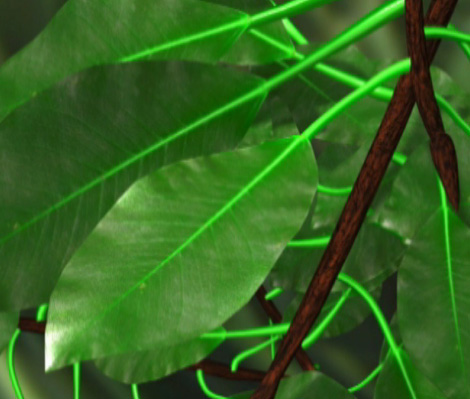One day at a time
Trees have a long life expectancy. Some can even survive for thousands of years. Like rocks in the landscape, they appear indifferent to passing time. They hardly even seem to notice the changing seasons. But in reality, the tree is busy. Its roots are seeking out new sources of nutrients in the soil. Its leaves are shifting position to absorb more sunlight. It is pumping water from the ground for its thirsty foliage, and sending down sap to feed its roots. That branch that suddenly dropped off may just have been the tree trimming itself. In a familiar landscape, a tree may seem immoveable, like an ancient statue. But it is a living statue, reacting to its environment and, like us, living from day to day.
A breath of fresh air... in daytime
The tree needs water, carbon dioxide and sunlight to produce sugars through photosynthesis (Synthesis of organic substances made by plants from the light energy.). Its leaves let in air through their stomata (A minute epidermal pore in a leaf or stem through which gases and water vapor can pass. ), to absorb carbon dioxide, but at the same time they lose a lot of water, a vital resource. Since their chloroplasts (Specialized structure of the plant cell containing chlorophyll and ensuring photosynthesis.) can absorb sunlight only during the day, it's in the leaves' interest to close up shop when the sun goes down. The statue-like tree is a diurnal creature, busy during the day and resting at night.
Videoclip Transcription
Back





